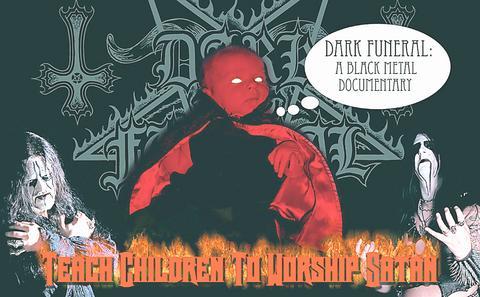Although its a party/arts event at Huashan organized by lao-wai, this is a far cry from the "foreigner head-shaking party" that tabloids enjoy getting steamed up about. It is, in fact, the Urban Nomad Film Festival (城市游牧影展), now back at Huashan for the second year.
This time round, a more complete selection of films will be shown, and these will be more focused on a single theme. In total, there will be 25 films (experimental, shorts, documentaries and mockumentaries) screening over two days.

PHOTO COURTESY OF URBAN NOMAD
The Friday event begins with three experimental shorts. Tony Wu (吳俊輝), from Taiwan, a frequent participant in international short film or experimental film festivals, will present his latest work Making Maps (製造地圖). Wu's experimental style makes use of found footage, animated images and optical printing.
In Making Maps, he uses these methods to talk about pornography, specifically blood and semen. For Wu, the pornographic images he weaves through this 21-minutes is a way of creating a physical and psychological map of human beings.
Another Taiwan entry is Lin Hongjohnn's (林宏璋) film about Taiwan's UFO cult. Lin, as the nephew of UFO cult leader, Chen Heng-ming, has unique access to the true believers.
The main event on Saturday is the Taiwan premiere of an underground film Redneck Vampire, a mockumentary by Mike Anderson. In the film, Anderson tracks down a man in central Alabama, who claims to be a redneck vampire, and explores his life of drugs, sex and immortality. The film proved a big hit on the Internet with its hilarious play on racial and class stereotypes. Even Ann Rice, the author of Interview with the Vampire, has signed on at the film's Web site.
The mockumentary is followed by the rockumentary session of three film. Dark Funeral, a film documenting the Taiwan performance of a Swedish black metal band. It explores their views on satanic cults and church burning. The film was previously selected for the 2002 New York Underground Film Festival.
For film-loving people, Urban Nomad will be an event to spot some innovative or odd creations of independent filmmaking. And for those who just want to chill out, there will be live music today and tomorrow nights, accompanied by film footage of surfing, punk rock concerts and a remix of Hitchcock's classic film Psycho.
The Urban Nomad Film Festival will run tonight and tomorrow at the Huashan Arts District (華山藝文特區) starting at 8pm. Huashan is located at 1 Pateh Rd., Sec. 1,Taipei (台北市八德路一段1號). Tickets are NT$200 for one day or NT$300 for both days. Tickets available at the door.

Taiwan can often feel woefully behind on global trends, from fashion to food, and influences can sometimes feel like the last on the metaphorical bandwagon. In the West, suddenly every burger is being smashed and honey has become “hot” and we’re all drinking orange wine. But it took a good while for a smash burger in Taipei to come across my radar. For the uninitiated, a smash burger is, well, a normal burger patty but smashed flat. Originally, I didn’t understand. Surely the best part of a burger is the thick patty with all the juiciness of the beef, the

The ultimate goal of the Chinese Communist Party (CCP) is the total and overwhelming domination of everything within the sphere of what it considers China and deems as theirs. All decision-making by the CCP must be understood through that lens. Any decision made is to entrench — or ideally expand that power. They are fiercely hostile to anything that weakens or compromises their control of “China.” By design, they will stop at nothing to ensure that there is no distinction between the CCP and the Chinese nation, people, culture, civilization, religion, economy, property, military or government — they are all subsidiary

Nov.10 to Nov.16 As he moved a large stone that had fallen from a truck near his field, 65-year-old Lin Yuan (林淵) felt a sudden urge. He fetched his tools and began to carve. The recently retired farmer had been feeling restless after a lifetime of hard labor in Yuchi Township (魚池), Nantou County. His first piece, Stone Fairy Maiden (石仙姑), completed in 1977, was reportedly a representation of his late wife. This version of how Lin began his late-life art career is recorded in Nantou County historian Teng Hsiang-yang’s (鄧相揚) 2009 biography of him. His expressive work eventually caught the attention

This year’s Miss Universe in Thailand has been marred by ugly drama, with allegations of an insult to a beauty queen’s intellect, a walkout by pageant contestants and a tearful tantrum by the host. More than 120 women from across the world have gathered in Thailand, vying to be crowned Miss Universe in a contest considered one of the “big four” of global beauty pageants. But the runup has been dominated by the off-stage antics of the coiffed contestants and their Thai hosts, escalating into a feminist firestorm drawing the attention of Mexico’s president. On Tuesday, Mexican delegate Fatima Bosch staged a